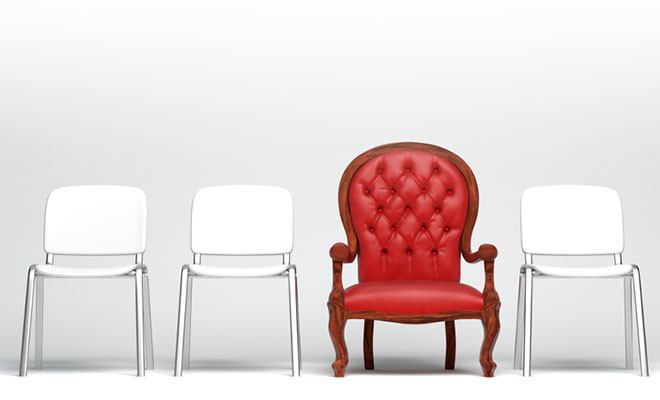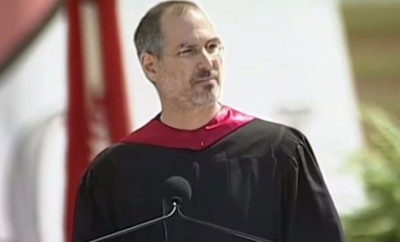
The Unique Self
What do you think of when you hear the words “Unique Self”? Childhood memories of gold stars and “I am special, look at me” nursery rhymes? Stacks of self-help books intended to help bolster and reinforce the ego? The latest New Age The Secret-type fads that place the self at the center of the universe, instead of the universe at the center of the self? A particular constellation of Jungian personality types, Enneagram typologies, astrological signs, and countless “Which Battlestar Galactica character are you” quizzes on Facebook?
As Marc mentions, the Unique Self is much more than a Myers-Brigges test with a spiritual overlay. It does not refer to any of these ornaments of the self—though it is immanent to the trials and tribulations of the ego, it utterly transcends the ego, remaining forever untouched by the appetites of identity. The Unique Self represents the deepest possible expression of consciousness, a subject that can never be made object, the union of ever-present consciousness and individual perspective at a radically fundamental level.
Imagine four people sitting in a room, each looking at each other. All four of these people are “fully” enlightened; that is, as enlightened as a person can be at this point in history. Gazing upon one another, they see the very same Oneness staring back at them, recognising the effortless awareness behind each set of eyes. There is an immediate recognition of primordial consciousness, of the radical singularity of being—the singular to which there is no plural. In each other’s eyes, they see their own Original Face, echoes of ubiquity emanating from an unmentionable Source. They can all see the radical and universal sameness of reality, each understanding that there is only one single Witness behind every set of experiences. In each other’s eyes they see only themselves, recognising the very same effortless awareness that looks out from behind their own.
Now let’s imagine that these four enlightened masters are sitting in a circle, each looking at a globe that sits on a table between them. Although they all share the same direct apprehension of Oneness, they each retain a particular perspective of the globe, and therefore each see the world in a completely different way. There is something markedly unique about each of their experiences, from their physical orientation in time/space to their individual experience of the universal. Within each of them lies a fundamental thread of perspective, stretching all the way to the darkest depths of the Mystery—a bottomless drop of the Heart that is unique to each and every one of us.
There is only one universal “I AMness” in existence, and as many unique experiences of “I AMness” as there are perspectives in the universe. If we allow ourselves to think of consciousness as “a sphere whose center is everywhere, and whose perimeter is nowhere,” we see that, although we all share the same existential center, my center is not your center—my “bottomless drop” is not your “bottomless drop,” even if they are laced together in the Heart of the world. There is a seamless union of the universal and the unique that is completely and inextricably your own. It is the very last inch of you—an inch that can never be duplicated, can never be imitated, and can never be taken away.
The End is the Beginning is the End….
In a certain sense, the Unique Self represents an end to the spiritual journey, the final realisation of enlightenment. Which raises the question: if Integral Spiritual Experience is to be a five-year journey, why start here? But here we begin chasing our own hermeneutic tails, words bouncing off the face of the Mystery like photons off a mirror. This nondual unification of self and no-self—”final” in it’s own right—is as unattainable as it is inescapable. It has no beginning and no end, as it never enters the stream of space/time to begin with; and yet it permeates all space and all time, never separate from the kaleidoscopic carnival of the manifest world.
The Unique Self is the substrate of our 1st-person experience, the subtlest patterns of perspective, flavors of love, and textures of spirit that make you exclusively you in this ecology of souls. With our deepest recognition of our Original and Unique Face, we begin to feel the evolutionary imperative surging though our veins—an insatiable drive to simply be ourselves, as freely and fully as we possibly can.
This is both the Alpha and the Omega of the Integral Spiritual Experience, the first and final step toward our own awakening, while guiding our hearts and minds at every point along the way.
“The Divine cries out to every individual human being: ‘I need you, I need your unique service.’ There’s something that you have that is so ultimately gorgeous and unique and is desperately needed by the universe for its own evolution, for the Divine’s own process of coming to know Him/Her/Itself.” – Marc Gafni
Returning to the Marketplace
Robb, Ken, Marc, and Sally discuss the plans for the final year of the Integral Spiritual Experience, which is designed to emphasise service and activism in the world, stemming from direct and immediate recognition of the Unique Self. In Zen Buddhism, this stage of realisation is often represented by one of the “Ten Ox Herding Pictures,” a series of short poems and images intended to illustrate the various stages of enlightenment. The very last image of the series is often called the “Return to the Marketplace,” symbolising the final stage of enlightened living, when the individual returns to society with open hands and an open heart. But how we return to the world and what form our expressions of love and service take depends entirely upon the particular textures and talents of our own Unique Self. Only finding our own voice, our own rhythm, and our own melody can we find our deepest contributions to the symphony of life,
“The Unique Self expresses itself uniquely at different life stages. So how my Unique Self and unique service expresses itself at age 20 is a very different set of questions than how it expresses itself at age 45 or age 60. And in a sense, the traditions that privilege emptiness and ask us to plunge deeply into the self as consciousness, free of its limiting prisms is not a young person’s natural path, because what a young person is doing in the world is to a large extent constructing a whole series of personae that are necessary to play in the world. It seems to me that what Integral is here to do is to bring this understanding of how you live in an egoless way without denying your worldly goals.” – Sally Kempton
Practicing Your Uniqueness
How do you practice that which you can never attain? Sally, Ken, and Marc each point a finger to the moon, recommending in turn a simple practice of ethics and self-inquiry, a brief taste of ever-present I AMness, and a quick 2nd-person exercise to help open our hearts to all the other Unique Selves we are surrounded by every day.
“Starting from the position of I AMness, and from the recognition that it is ever-present and the core of what you are, then you can start to understand and look for ways that this unique I AMness expresses itself in you. Because even though everybody is going to have the same I AMness experience, they are going to have a different perspective on the world through that I AMness. And that is the Unique Self. So resting in I AMness, start to ask yourself the fundamental questions—’What should I do? What are my gifts? What are my talents?—and start to see how I AMness is expressing itself uniquely through your body-mind.” -Ken Wilber







